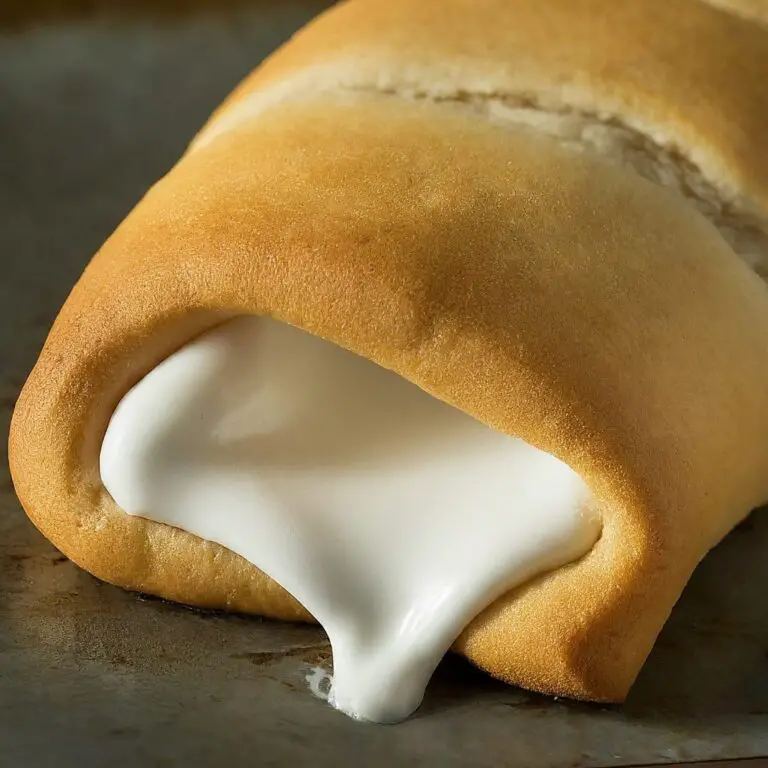
Many people use a premade pizza crust or par-baked dough when making homemade pizza. The premade crust may be okay, but it may not be as flavorful as handmade dough.
Yet, one of the most common problems most amateur chefs encounter is that the pizza dough is not stretchy enough. What are the reasons?
How to stretch pizza dough properly? You can follow the five steps, including:
- Step 1: Allow the dough to come to room temperature before working with it.
- Step 2: To avoid stickiness, use olive oil to prepare your workspace.
- Step 3: Before stretching your pizza dough, press it.
- Step 4: Use both hands to stretch the dough and gravity to help you.
- Step 5: Place the dough on a pizza peel and stretch it out.
We’ll go through proper dough-spreading procedures and provide you with some helpful hints for preparing an excellent homemade pizza base in this post.
Why Isn’t Your Pizza Dough Stretchy Enough?
Before learning how to stretch pizza dough, it’s best to figure out some potential causes why your dough isn’t elastic like a standard one.
Gluten Strands Have Grown Too Long.
The gluten strands may have gotten overdeveloped if the dough is tight and stiff.
Gluten requires time to sit out once it has been made. The strands grow soft and supple during this resting stage.
After kneading, let the pizza dough sit for a few minutes, around 30 minutes.
The most significant cause of your dough not being stretchy enough to mold together into pizza is a brief resting time.
If you are kneading your dough with a mixer, it’s better to set the running time from 5 to 10 minutes intervals. Remember to let the dough sit out for approximately 10 minutes among runs.
After that, you can apply the poke test to check its elasticity. It should quickly return to its original shape if it is elastic enough.

Moisture Content Is Low.
Another cause your dough isn’t elastic is that it hasn’t achieved enough moisture content.
Your dough will be more hydrated if you add extra water to it—higher hydration results in a soft, stretchy dough.
Pizza dough that has not been appropriately hydrated may be stiff and readily split apart. When you stretch it out, it will crack and break.
It’s likely that the dough is either too moist or too dry. Both of these scenarios will result in various issues.

The Flour Is Inappropriate.
Gluten content varies depending on the type of flour used. So, if you use improper flour for pizza dough, it might not be stretchy as you expect.
Pizza flour is a type of flour that is specifically designed for pizza. It contains a gluten content of 10 to 12 percent.
There are various kinds of pizza flour available, so you will have no trouble purchasing it.
The 00 pizza flours are among the most outstanding varieties to seek for. The number represents the density of the grains.
The flour has a more delicate texture as the number of zeros increases.
You can substitute bread flour for it if you can’t find it and don’t have much time for online shopping. Gluten content is higher in bread flour than in pizza flour.
All-purpose flour, which contains a lot of gluten but not as much as bread flour, is also a great alternative.
The Temperature Is Unsuitable.
The temperature seems to be the final factor that might affect the dough’s elastic fibers.
Although putting the dough inside the refrigerator is usually a great idea, it may be tough to deal with when it becomes cold.
Gluten strands are stiffer and firmer when cold. It’s also possible that stretching out cold, stiff dough will cause it to break.
You should bring it to room temperature and leave it for about 2 or 3 hours before making pizza. The strands of warm gluten will then be elastic and loose.
Now, it’s time to focus on the main question, “How to stretch pizza dough?”.
Scroll down to discover more!

How To Stretch Pizza Dough?
How to stretch out pizza dough? Wait any longer! Here are the step-by-step instructions for amateurs to spread out the pizza dough properly.
Step 1: Allow The Dough To Come To Room Temperature
If you store the dough in the fridge, it’s best to take it out and leave it at room temperature for at least 30 minutes before starting the other steps.
Gluten, the component that gives pizza dough its chewiness, contracts when exposed to cold temperatures, such as those found in the refrigerator.
That’s why, like a bungee cord, cold dough stretches and snaps back. This step will make the dough softer and more straightforward to work with.
Remove it from the grocery store’s plastic wrapper and place it in an oiled blending container like a bowl.
Remember to cover the bowl and place it in a warm location for a minimum of 30 minutes.
So, you have a chilled dough and can spread it out.

Step 2: To Avoid Stickiness, Use Olive Oil To Prepare Your Workspace.
It’s important to avoid using flour in this recipe. Some doughs benefit from flour to prevent them from sticking together, but using too much flour might make it tough.
Instead, use 2 or 3 tablespoons of olive oil to rub your hands and workplace.
Olive oil prevents the pizza dough from adhering to your baking sheet or cutting board while creating a beautiful, crispy crust.
It’s also a good idea to coat your pizza stone with baking parchment or cornstarch at this point.
Step 3: Before Stretching Your Pizza Dough, Press It.
The dough must first be flattened together into a disc before being stretched. How to spread pizza dough?
With your palm, press the dough into a wide flat disc.
The dough should be pressed outwards from the center using the middle three fingers of both hands.
Make a giant circle out of the flat disc, approximately 6 inches in diameter and 1/2 inch in thickness.
When you knead the dough, it must be stretchy. At this point, it doesn’t matter if the flat disc isn’t round.
If needed, take another rest. It’s quite acceptable if the dough shrinks slightly over time.
If it shrinks back immediately, leave it for about 15 or 20 minutes below a clean dish towel and repeat the third step until it keeps its form.
Step 4: Use Both Hands To Stretch The Dough And Gravity To Help You.
Even while it may look impressive, spreading dough using the knuckles and throwing it in the air won’t be the ideal technique to make it stretch.
Alternatively, hold it near your body and rely on gravitational pull and hand pushing to achieve a uniform crust.
When the dough is ready to be stretched, you should pick it up gently and use both hands to hold it over one side, causing its remainder to hang down.
If you want to check the consistency of the dough, turn it towards you.
Gravity will help with part of the spreading of the dough when you gradually spin it in one direction, like rotating a wheel. Once it hangs down, gently pull it from one palm to another.
Spread the dough fast until it’s approximately 11 inches wide and one ⅓ thick.
If there are any thin areas or holes, don’t worry about them. The following section includes some helpful hints for resolving them.
Step 5: Place The Dough On A Pizza Stone And Stretch It Out.
Carefully transfer the stretched dough to the pizza stone or sheet pan that has been prepared.
Take a peek at the dough you’ve made. Is it exactly 10 inches wide and even? Then you are a fantastic pizza master!
At this point, you must have learned the proper ways to deal with the problem “How to stretch pizza dough?”, right?
What To Do If Your Pizza Dough Doesn’t Stretch?
After trying so hard to stretch the pizza dough, but it’s still not elastic enough, what should you do? Look no further than these helpful tips below:
Check To See If The Pizza Dough Is At The Proper Temperature.
Gluten, a protein, is what makes pizza dough flexible and elastic.
It’s possible that your dough is excessively elastic, shrinking and bouncing back even when stretched out because it’s been sitting out too long.
Cold dough shrinks when spread out or snapped back to its original shape because the gluten gets firmer owing to the decreased temperature.
The simplest method to avoid this problem is to pull out the dough once heated up at room temperature.
Increase Your Olive Oil Usage.
Some people prefer to flour their cutting boards, but this isn’t always a brilliant idea while working with pizza dough. It has the potential to affect the texture of some dough and turn it hard.
Using olive oil is all that is necessary at this stage. Use this oil to coat your hands and the cutting board. You’ll avoid sticking and breaking the dough thanks to this method.
If your dough is still tearing, increase the amount of olive oil. It will assist in spreading the dough much more straightforwardly and creating a beautiful golden crust after baking.
The Pizza Dough Must First Be Pressed Out.
It’s essential to use your palm to press the dough before spreading it into form. Maintain a firm grip on it and make sure it’s smooth and flat.
Gravity Is Important.
Dough tossing is tremendous, but this technique is not suitable for homemade pizza. So, it’s best to apply the standard stretching method.
Place Pizza Dough On The Pan.
Dough tossing is excellent for experts to perform, but it’s not ideal for amateurs to do at home.
To expand your dough, grip one edge using both hands and allow the rest to the dropdown. It will be pulled downward by gravity.
Continue moving through your fingers until you have pulled it out uniformly from all sides of the width.
What To Do If Your Pizza Dough Tears While Stretching?
If you’re baking pizza at home for the first time, your dough is likely to tear. If this bad situation happens, apply one of the below solutions to get things back on track.
Increase Gluten Intake
If you want to build a strong gluten network, it’s necessary to knead the dough for a long time. At this point, tearing is less likely to happen.
How long does it take to knead the dough? In general, you do not need to spend too much time on this step, only about 3 to 5 minutes is enough.
The flour and water react when you make your dough. Gluten is formed as a stretched, stretchy network of gluten strands due to this process.
You can quickly feel this phenomenon when you knead and disseminate water over the flour.
The dough may expand without tearing because of the gluten once the yeast creates carbon dioxide and fills your dough with bubbles, allowing it to spread.
Therefore, your dough is just a fuzzy flour ball that’ll tear if you don’t have gluten.
Gluten is hugely to create itself. So, as long as you use suitable flour, you don’t need to worry about the kneading time.
Pizza dough does not need as much kneading as bread dough because it does not require a dense crumb texture.
Use The Windowpane Test To Check The Gluten Development
It might be tough to tell whether the dough is ready to bake if you are a newbie baker.
Most recipes call for kneading the dough until it becomes smooth and stretchy. However, are you over-kneading or under-kneading it?
You’ll get a better sense of the dough when you knead. In the interim, the windowpane test is a reliable test you can apply to determine readiness.
The first thing you should do is poke your dough. If it shrinks back slightly after being kneaded, gluten has developed. Next, apply the windowpane test.
First, take a small piece. Then, stretch the dough apart with your fingertips until you have a thin sheet of crust. Continue to spread out until it’s paper-thin and translucent.
If it rips, it isn’t quite ready. A properly formed dough should be able to stretch exceptionally thinly.
If you are unsure how to do the windowpane test, you can refer to this video:
Allow Enough Time For Your Dough To Rest
If you don’t let the dough enough time to sit out, it might be tight and prone to tearing.
Gluten will feel incredibly hard and firm after it has developed. The gluten will loosen over time while it rests and proofs.
That’s because gluten deteriorates with time. You’ve probably realized that stretching a ball of dough after resting time is more manageable than pulling it straight away after kneading.
Therefore, allow enough time for the dough to rise. High-gluten dough may come back to its original shape if not chilled. It will expand more quickly if you give it more time.
Learn How To Stretch Your Dough Evenly
To achieve the optimum results, stretch with your hands. Because gluten gets stiff when cold, you’ll need to ensure the dough is at room temperature before kneading.
Build the crust by making a circle indent one inch from the edge using your fingertips.
Flatten the middle crust with your fingertips. Spread it out with your flat hands, rotating the ball dough when you knead.
Remember not to stretch from the middle. Concentrate your efforts on expanding the dough’s edges.
That’s because the center will extend out from all sides and become too thin. It is the most typical location for a tear to occur.
Take a look at any spots that appear to be frayed. To notice the thin portions, lift the crust onto the knuckles and bring it up to the light. To get a good even dough, concentrate on the thicker parts.
Try to be gentle as much as possible! The more you put into it, the more difficult it will be to achieve your goal.
Consider Using Flour With Higher Protein Content
Gluten is generated from the protein content in flour. So, the flour with a higher protein will produce a more robust gluten network.
Italian “00” bread flours and all-purpose flours are among the flours that spread more quickly. The all-purpose flour contains less protein, but the 00 flour is made with softer wheat, creating a more delicate sense.
Consider using flour with a protein concentration of around 12-14 percent. If you select a flour with a higher protein, your dough might need to be rested for longer because of its high flexibility.
If so, find the protein content per 100g of flour, 14g of protein, or 14 percent protein.
How Long Should Pizza Dough Rest?
For high-quality pizza, the dough must rest for an extended bulk fermentation period.
Organic acids, gas, and ethanol begin to accumulate during this time. The starch is also broken down, and gluten connections are strengthened.
After the kneading process, your dough should be covered and fermented for many hours.
Next, it’s better to divide and leave it to sit out before the stretching process.
After that, you should let it rest the second time, spread it for the last time, and add toppings before putting it in the oven.
The whole sitting time will differ depending on the recipe. Although most skilled pizza bakers claim you should not rush it, it might take ranging from 2 to 3 days.
Traditional pizzerias require an overall preparation time of at least 24 hours.
Pizza dough is traditionally kneaded for approximately 20 minutes and then chilled for a minimum of 12 hours, mainly in the refrigerator.
Then the bakers will divide it into even portions and set them aside for another 12 hours before being used. The pizza crust can be kept in the refrigerator for another 6 hours before it deteriorates.
Why does the pizza dough require resting time so long? Every pizzaiolo has a different opinion on how long the dough should rest before baking.
Some believe the resting time should be within 24 hours, while some argue that the dough is only good after a 48-hour resting period.
Warming the dough promotes organic acid and yeast formation, which speeds up its development. This will harm your dough since the gluten formation will not quicken up to keep up.
The temperature of the extensive volume fermentation impacts the dough flavor because the complex starches will be separated in cold conditions.
These have sweeter smells and flavors. Your dough will require much time to form if you refrigerate it, significantly increasing the flavor!
How To Stretch Pizza Dough: In A Nutshell
This article has ultimately got to the bottom of your headache question: How to stretch pizza dough properly? As you can see, spreading the dough is not highly challenging as long as you follow the above tips.
In particular, you should apply the proper stretching technique, leave the dough enough resting time, and choose the suitable flour for making pizza.
Besides, notice the kneading time and the resting period to create a stretchy and perfect. Hopefully, this article will be helpful for your task.
Thanks for taking the time to read it, and see you in the next post!
Read more:






